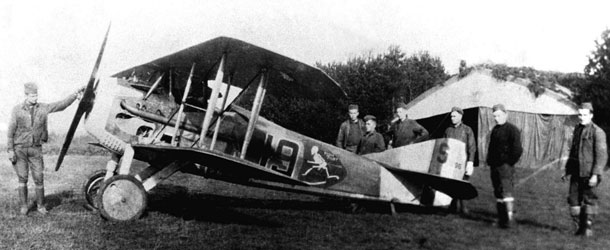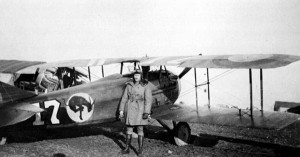The fighter SPAD XIII is one of the next airplanes to be featured in the WW1 Wings of Glory game. Fast, powerful and strong in diving, it was one of the most widely produced aircrafts during WW1, with almost 8,500 units built. This French biplane was used by the air forces of 17 countries and it was flown by many famous aces, such as Georges Guynemer and Rene Fonck (France), Francesco Baracca (Italy), Eddie Rickenbacker and Frank Luke (United States).
Developed by the "Société Pour L'Aviation et ses Dérivés" (SPAD), the XIII was an improved version of the smaller SPAD VII, which was fast, durable and difficult to shoot down. The VII entered in service in September 1916. Powered by a 150 horsepower (110 kW) Hispano-Suiza 8A water cooled V-8 engine, the SPAD VII was very successful, until it was surpassed by the new German fighters, such as the Fokker D.VII, in 1917. The SPAD designer Louis Béchereau worked to improve the VII, and in April the SPAD XIII flew for the first time.
The SPAD XIII had a similar layout to the VII, but with larger wings and rudder and a more powerful engine – a Hispano-Suiza 8B 8-cylinder, 220 hp, fitted with reduction gearing, driving a larger "right-hand" propeller. It was armed with two 0.303 in (7.7 mm) Vickers machine guns, one more than its predecessor, and all these improvements increased the flight and combat performance. The SPAD XIII could reach a maximum speed of 218 km/h, faster than its main contemporary fighters, and its structural integrity allowed pilots to use extensively diving tactics. The weak point of the SPAD XIII was its maneuverability. It was improved compared to the SPAD VII thanks to the larger rudder, but the airplane was still difficult to fly for novice pilots, especially at low speeds.
The first SPAD XIII prototype flied on 4 April 1917, and the first units were delivered to the French Air Service in early May. In March 1918 there were 764 aircrafts in service, compared with a planned 2,230. But the deliveries continued and the SPAD XIII equipped 74 Escadrilles (Squadrons) during the First World War. Besides the French air force, many other Allied forces also adopted the fighter. The United States Army Air Service purchased 893 units, and 15 of the 16 operational U.S. pursuit squadrons had the SPAD XIII in use at the end of the war. The 23rd Squadron of the Royal Flying Corps was equipped with these fighters in December 1917 and employed them until April 1918. The 19th Squadron, which used theVII, also operated at least one SPAD XIII. After the war, it was also exported to Japan, Poland and Czechoslovakia.
The WW1 Wings of Glory Airplane Packs features three versions of the SPAD XIII, piloted by the aces Edward Rickenbacker, Marcel Coadou and Georges Félix Madon, which we will describe in an upcoming article.
Information sources: The Aerodrome, Wikipedia, Military Factory, WW1 Aviation, Fan d’Avions, Military History.










